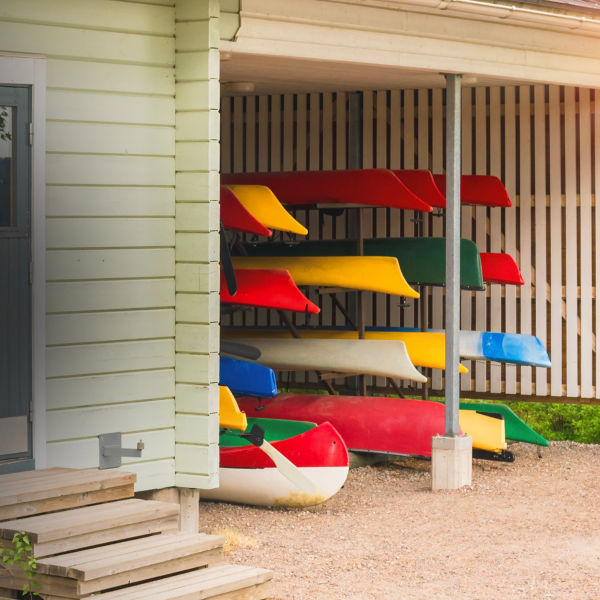
It’s no secret that canoes and kayaks are bulky. Most of the time, they’re over 10 feet long and weigh over 40 pounds. And unless you live directly on the only body of water that you ever plan to paddle, you need a good way to transport your craft. With the largest and heaviest boats (like fishing kayaks), a truck bed or small trailer is the best way to haul. With most other boats, however, the roof of your car is the easiest way to go. But just as paddling offers a wide variety of boats for every type of water, there’s also more than one effective way to car-top carry your boat from A to B. We’ve outlined the best options, from simple to complex, to help you load up and launch.
Option 1: Buy a Packable Boat
Best For: City or apartment dwellers, small car owners, or anyone who doesn’t want anything to do with the roof of their car.
Owning and storing a 12-foot kayak isn’t in the cards for all, especially in dense urban settings where both car and home storage space is limited. Consider an inflatable, foldable, or collapsible kayak, which packs down to the size of a suitcase or smaller. Tote it in the trunk or back seat of a car, take it on public transportation, and store it in a closet. Then, once you get to the water, just inflate or assemble. No other carrying accessories required.
Option 2: Foam Blocks or Naked Crossbars
Best For: Canoe owners, fans of simplicity, casual or part-time paddlers.
If you’re not interested in getting a dedicated or expensive carrying system for the roof of your car—maybe you only need to move your boat occasionally—use a setup as simple as foam blocks on your car’s roof rack. (A rack is required for all rooftop carrying options from here out; transporting a canoe or kayak without rack crossbars will likely damage both vehicle and boat.) Specially made blocks hug your crossbars and cradle the hull of your kayak, riding right-side up. If you transport your boat often, blocks won’t be as durable or secure as a dedicated boat carrier (though are less expensive). You will need cam straps and likely bow and stern lines with this option.
As a canoeist, the most secure ride means flipping your canoe upside-down to rest its gunwales directly on your crossbars (keep in mind, with certain canoe materials, you might want to buffer the rack with foam or towels to protect the canoe). Canoe-specific rests can mount to the top of your bars for added protection, though not a necessity.
Option 3: J-Bars
Best For: Anyone capable of lifting their own kayak; paddlers looking to save roof space for other needs.
The most common way to transport your kayak is with J-shaped bars that cradle the kayak on its side. They’re secure (you will need cam straps and likely bow and stern lines with these as well), easy to use, and simple. But you will need to lift your kayak onto your roof, which favors having an extra set of hands, or the ability to safely hoist your kayak over your head solo.
No two J-bars are alike, either. You can choose from simpler, more economical rigid options, or cradles that fold down flat when you’re not carrying your kayak, which also cuts down on wind noise. And because J-bars hold your kayak mostly on its side, you’ll likely still have room opposite your kayak for another accessory like a storage box or bike rack (depending on your vehicle and the width of your crossbars). Make sure your cradle accessory matches or is compatible to mount on the shape of your crossbar, whether it is flat, round or square.
There are also simple “pillars” (think just the upper part of a J-bar, mounted completely vertically) that decrease the roof space of a kayak even more, allowing you to carry multiple kayaks lined up on their sides, but are more difficult to use.




















